
Ferry and Brandon's: Cost Planning of Buildings
The eighth edition of this leading textbook has been thoroughly updated to reflect the significant changes that have occurred in the UK construction industry since the new millennium. Whilst retain…
- Edisi
- Ed. 8, Cet. 1
- ISBN/ISSN
- 978-1-4051-3070-7
- Deskripsi Fisik
- xix, 404 hal.; ilus.; 17 x 23,7cm.; indeks.
- Judul Seri
- -
- No. Panggil
- 692.5 KIR f
Building Information Modeling: BIM in Current and Future Practice
Many architects and engineers regard BIM as a disruptive force, changing the way building professionals design, build, and ultimately manage a built structure. With its emphasis on continuing advan…
- Edisi
- Ed. 1, Cet. 10
- ISBN/ISSN
- 978-1-118-76630-9
- Deskripsi Fisik
- xxxii, 397 hal.; ilus.; 20 x 24,3 cm.; indeks.
- Judul Seri
- -
- No. Panggil
- 690.0285 KEN b
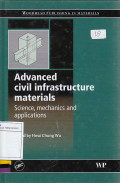
Advance Civil Infrastructure Materials: Science, Mechanics and Applications
The first chapter discusses advanced concrete for use in civil engineering, looking at developments such as ultra-high strength and high durability concretes, self- compacting concrete, polymer mod…
- Edisi
- Ed. 1, Cet. 1
- ISBN/ISSN
- 978-1-85573-943-7
- Deskripsi Fisik
- xiv, 360 hal.; ilus.; 16 x 24 cm.; indeks.
- Judul Seri
- Woodhead Publishing in Materials
- No. Panggil
- 691 CHU a
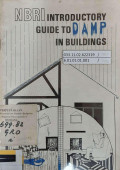
NBRI Introductory Guide to DAMP in Buildings
The book *NBRI Introductory Guide to DAMP in Buildings* by C. S. Grobbelaar and P. A. Billingham provides a comprehensive understanding of moisture issues in buildings, along with their impacts and…
- Edisi
- Ed. 1, Cet. 1
- ISBN/ISSN
- 0-7988-0756-3
- Deskripsi Fisik
- 28 hal.; ilus.; 15,1 x 21 cm.
- Judul Seri
- -
- No. Panggil
- 551.57 GRO n
Building Materials From Agro-Residues: Low-Cost Building Materials Technologi…
This work explores the innovative use of agro-residues as sustainable building materials, highlighting their potential to address both environmental challenges and housing needs. The text discusses…
- Edisi
- Ed. 1, Cet. 1
- ISBN/ISSN
- -
- Deskripsi Fisik
- xi, 231 hal.; ilus.; 15 x 23 cm.
- Judul Seri
- Monograph Series No. 1/1984
- No. Panggil
- 691.09 BEN b
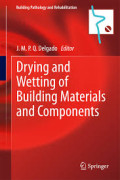
Drying and Wetting of Building Materials and Components
This book, Drying and Wetting of Building Materials and Components, provides a collection of recent contributions in the field of drying and wetting in porous building materials. The main benefi…
- Edisi
- Ed. 1, Cet. 1
- ISBN/ISSN
- 978-3-319-04530-6
- Deskripsi Fisik
- v, 215 hal.; ilus.; 16 x 24 cm.
- Judul Seri
- Building Pathology and Rehabilitation Volume 4
- No. Panggil
- 691 DEL d
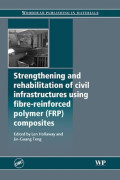
Strengthening and Rehabilitation of Civil Infrastructure Using Fibre-Reinforc…
The first three chapters of the book review structurally deficient civil engineering infrastructure, including concrete, metallic, masonry and timber structures. FRP composites used in rehabilitati…
- Edisi
- Ed. 1, Cet. 1
- ISBN/ISSN
- 978-1-84569-448-7
- Deskripsi Fisik
- xiv, 398 hal.; ilus.; 16 x 24 cm.; indeks.
- Judul Seri
- Woodhead Publishing in Materials
- No. Panggil
- 691 HOL s
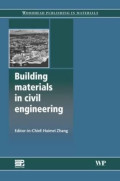
Building Materials in Civil Engineering
The book begins with an introductory chapter and a chapter describing the basic properties of building materials. Further chapters cover the basic properties of building materials, air hardening ce…
- Edisi
- Ed. 1, Cet. 1
- ISBN/ISSN
- 978-1-84569-955-0
- Deskripsi Fisik
- vi, 432 hal.; ilus.; 16 x 24 cm.; indeks.
- Judul Seri
- Woodhead Publishing in Materials
- No. Panggil
- 691 ZHA b
Management of Construction Projects
Managing Construction Projects is based on personal observations of six construc tion projects, with the text following the work stages from commencement to com pletion of the projects. The content…
- Edisi
- Ed. 1, Cet. 1
- ISBN/ISSN
- 978-1-118-55516-3
- Deskripsi Fisik
- vi, 294 hal.; ilus.; 17 x 24,5 cm. indeks.
- Judul Seri
- -
- No. Panggil
- 690.068 COO m

Applied Building Physics: Boundary Conditions Building Performance and Materi…
As all engineering sciences, building physics is oriented towards application, which is why, after a first book on fundamentals, this second volume examines the performance rationale and performanc…
- Edisi
- Ed. 1, Cet. 1
- ISBN/ISSN
- 978-3-433-02962-6
- Deskripsi Fisik
- xiv, 308 hal.; ilus.; 17 x 24 cm.
- Judul Seri
- -
- No. Panggil
- 690 HEN a
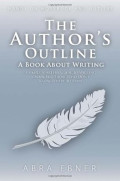
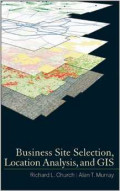

 Karya Umum
Karya Umum  Filsafat
Filsafat  Agama
Agama  Ilmu-ilmu Sosial
Ilmu-ilmu Sosial  Bahasa
Bahasa  Ilmu-ilmu Murni
Ilmu-ilmu Murni  Ilmu-ilmu Terapan
Ilmu-ilmu Terapan  Kesenian, Hiburan, dan Olahraga
Kesenian, Hiburan, dan Olahraga  Kesusastraan
Kesusastraan  Geografi dan Sejarah
Geografi dan Sejarah